Okta OpenID Configuration
The document provides a comprehensive guide for setting up Single Sign-On (SSO) login functionality within an organization's infrastructure. It outlines a series of steps to integrate SSO using Okta as the identity provider, facilitating seamless access to various applications and resources.
Beginning with navigating to the organization's Integrations screen and initiating the connection process, users are guided through the configuration steps, which include creating and setting up a OpenID SSO Provider. The document also covers the necessary configurations within Okta, such as creating an app integration and configuring OpenID settings.
Additionally, it offers guidance on advanced settings, including the importation of OpenID configurations from Okta. Through clear instructions and actionable steps, the document aims to empower users in implementing a robust SSO solution.
Appcircle supports Okta as OpenID or SAML provider.
Only Enterprise accounts support SSO.
Please be aware that, enabling SSO for APPCIRCLE LOGIN doesn't enable SSO for Testing Distribution and Enterprise App Store. They must be configured separately.
SSO Login
- To start, go to My Organization > Integrations screen and press the Connect button next to SSO Login under the Authentications section.
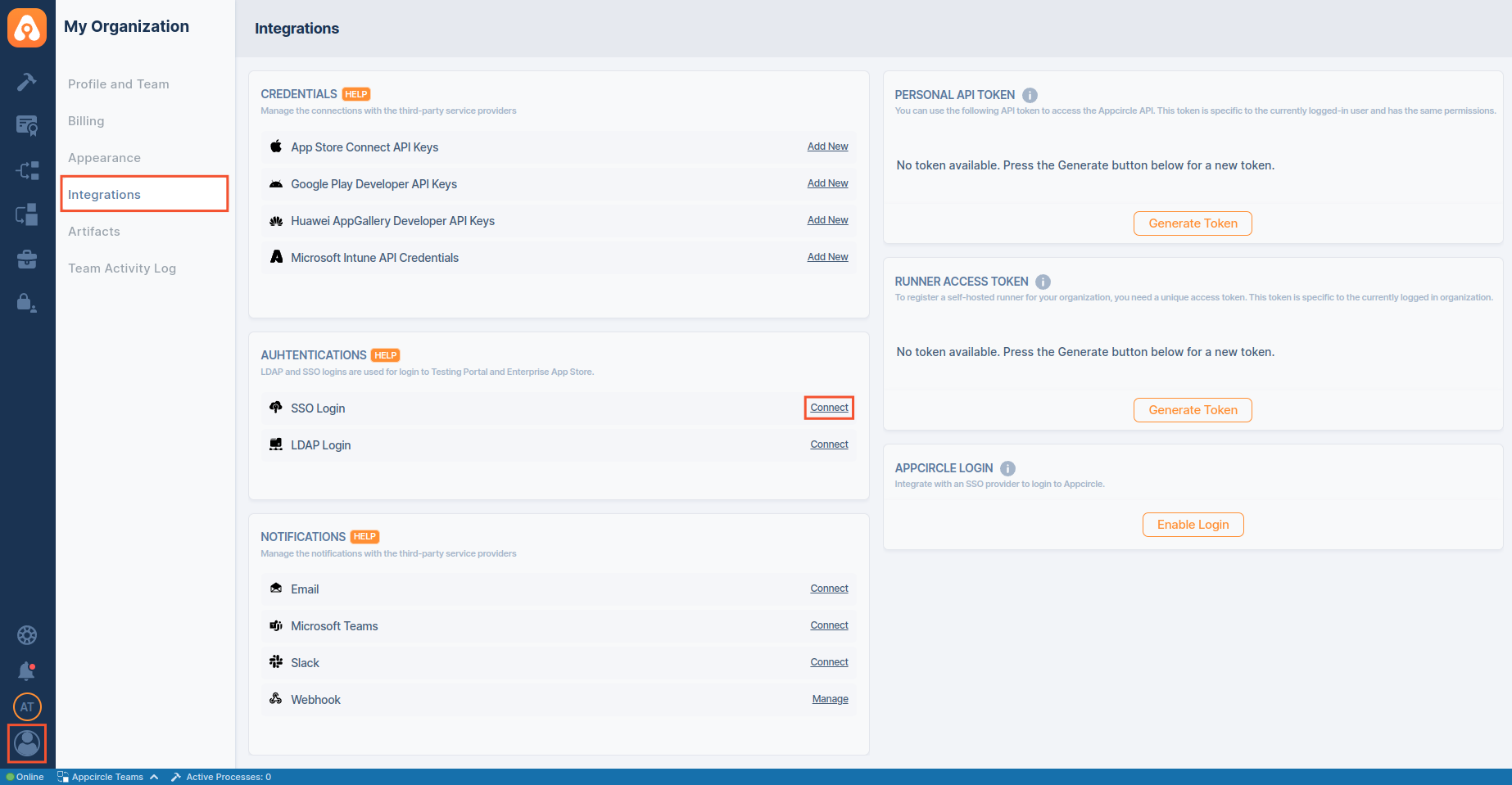
- Click Create button to create your SSO Login.
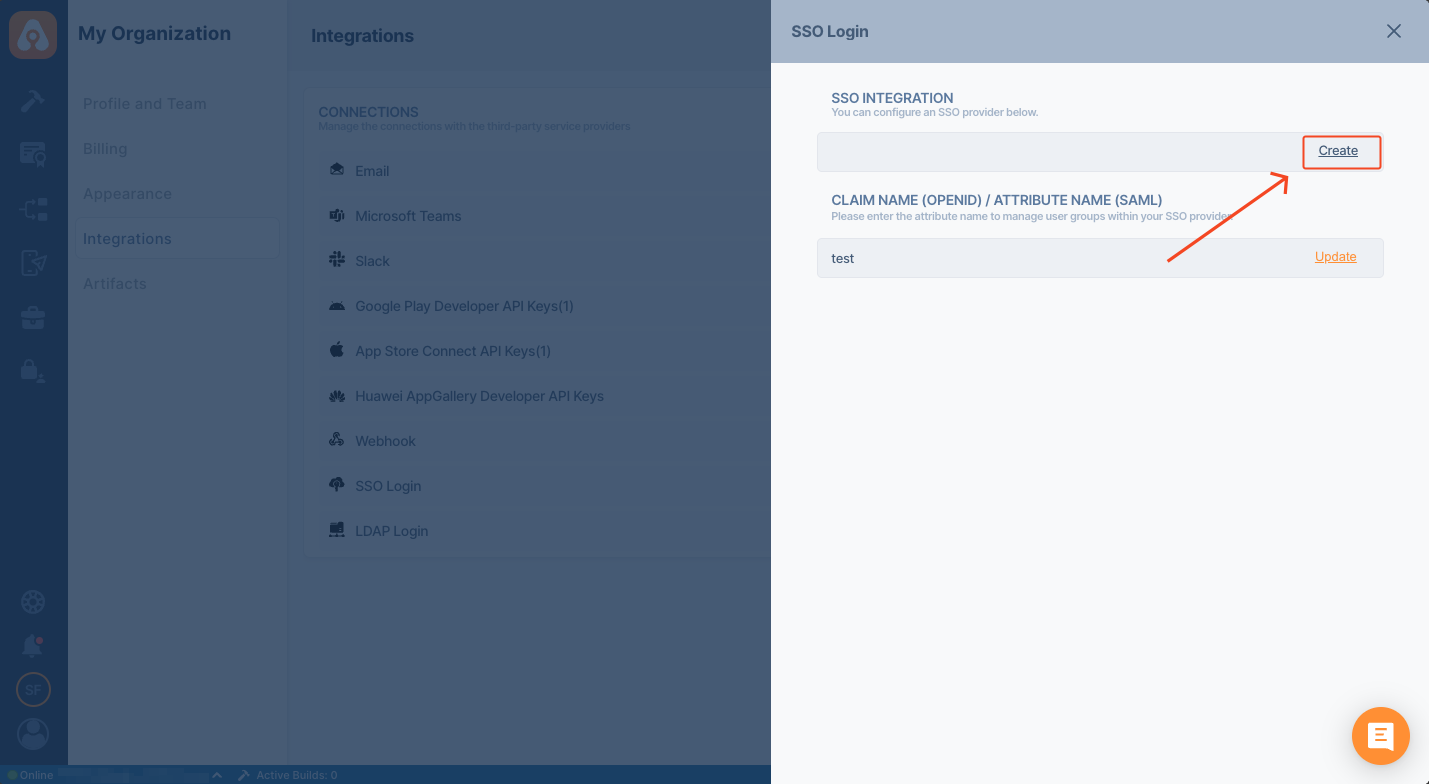
If you want to manage user groups within your SSO provider, you should set CLAIM NAME (OPENID) / ATTRIBUTE NAME (SAML) field.
- Select Setup OpenID SSO Provider.
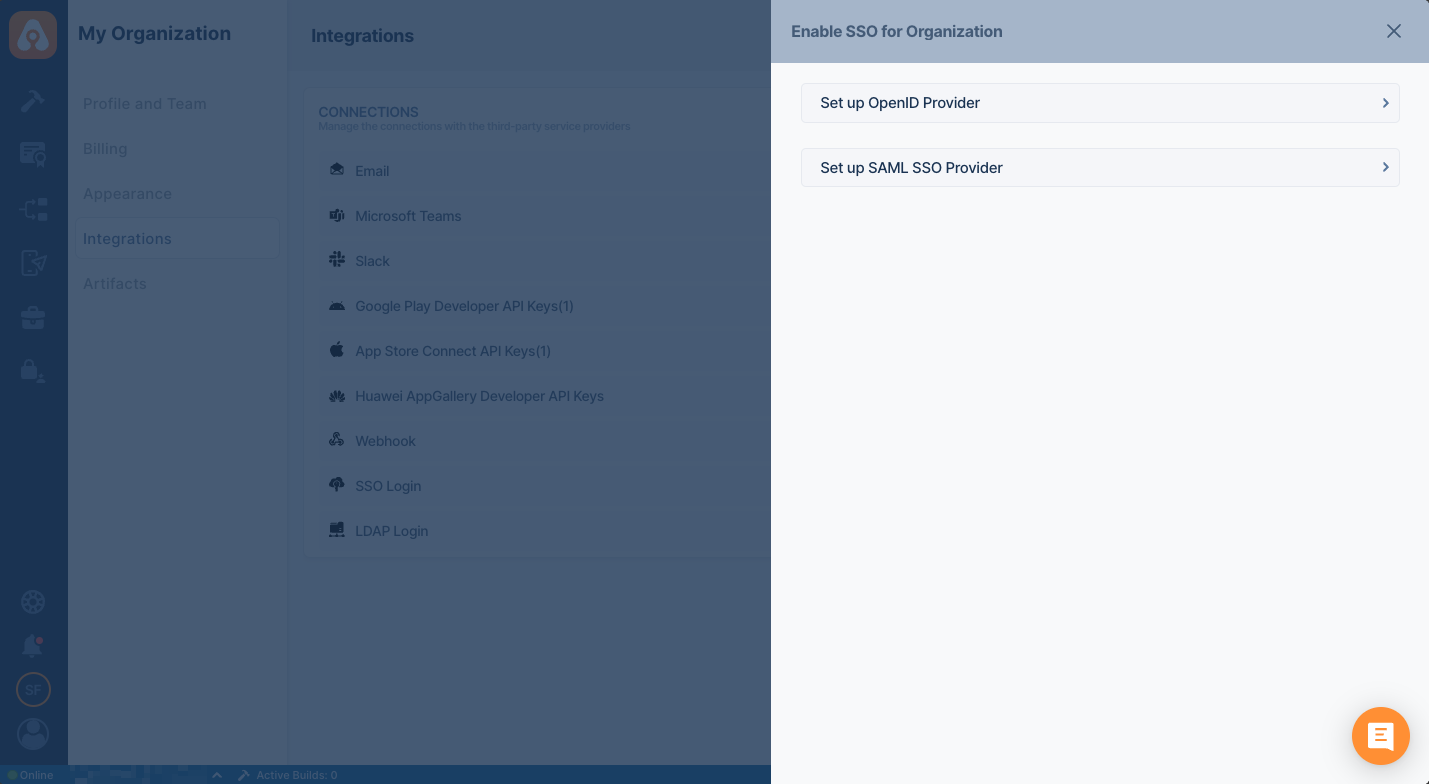
-
Pick an alias and display name for your organization. Please pick a short and rememberable alias.
-
This screen will auto-generate an URL for the Enterprise App Store and Testing Distribution.
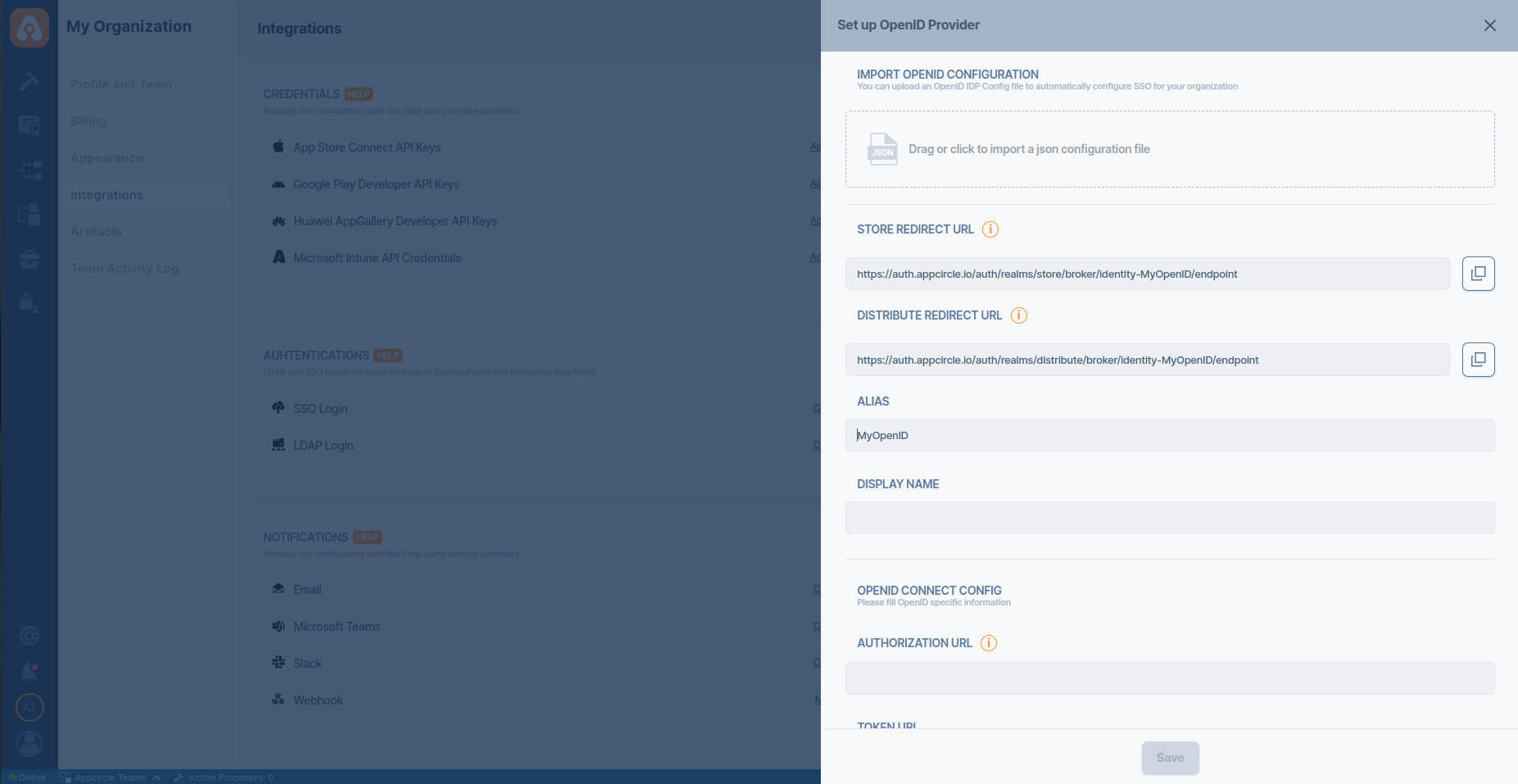
Okta App Integration
- Login to your Okta account and navigate to Applications and then click Create App Integration.
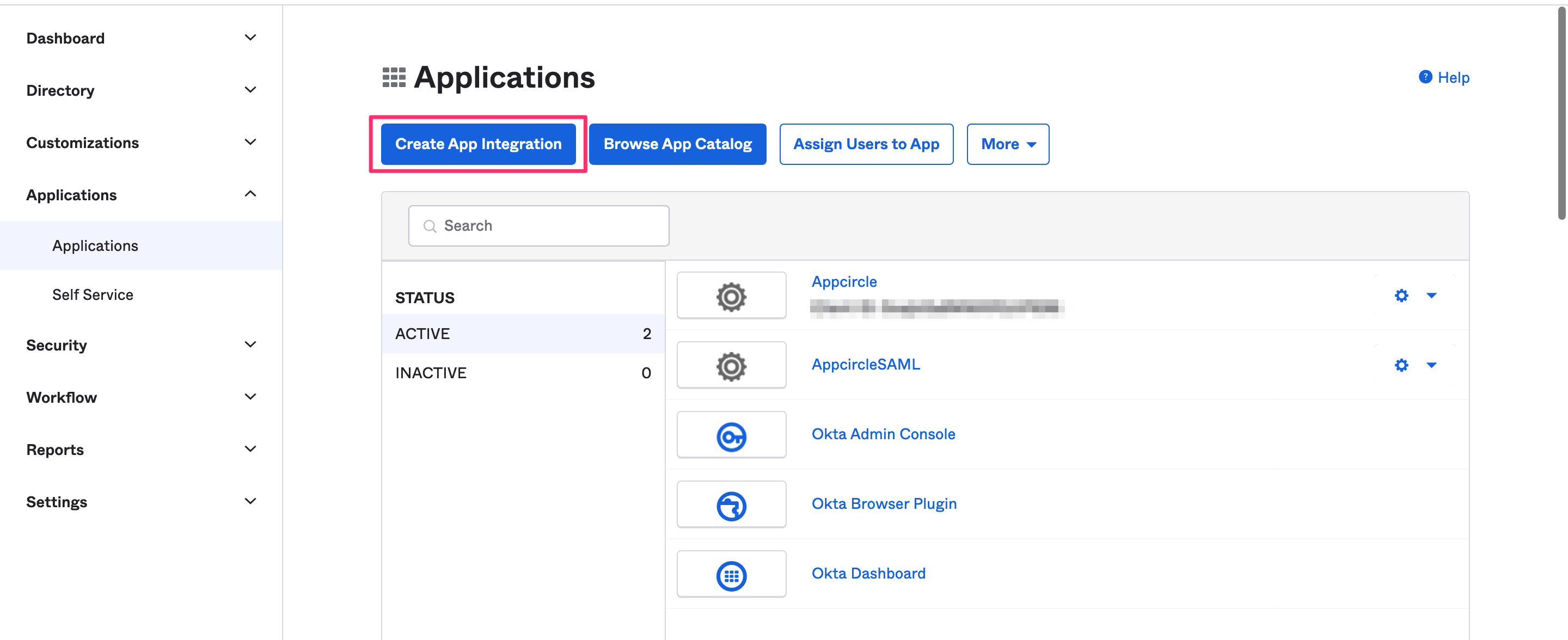
- Select OIDC - OpenID Connect as Sign In Method and select Web Application as application type then hit
Next.
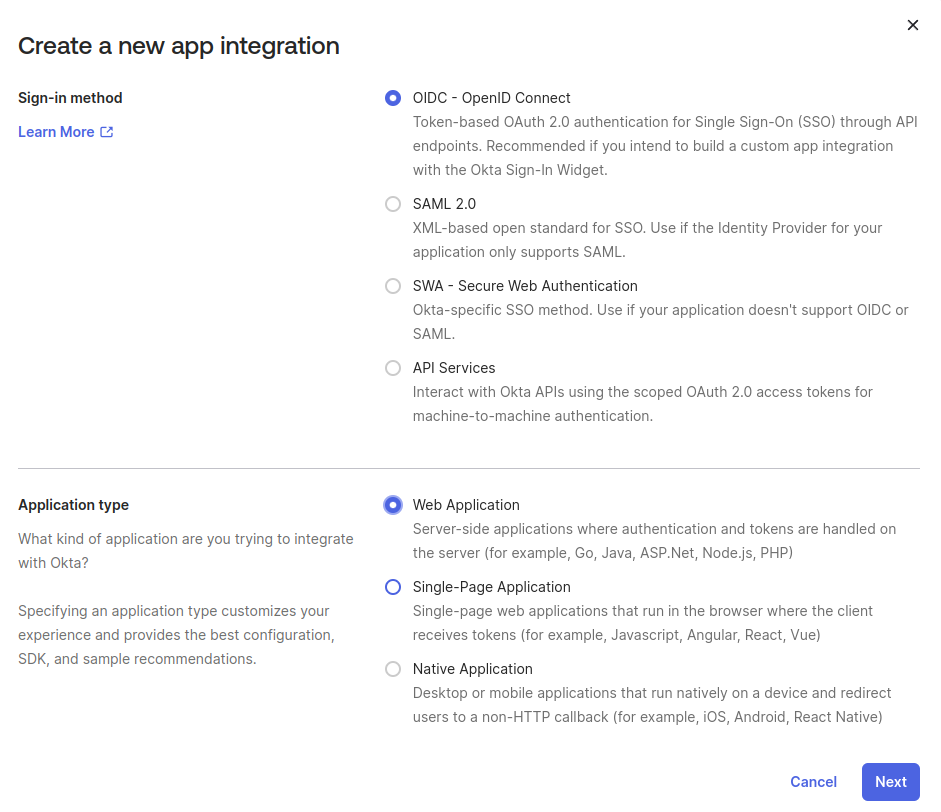
- Pick a name and optional logo for the app.
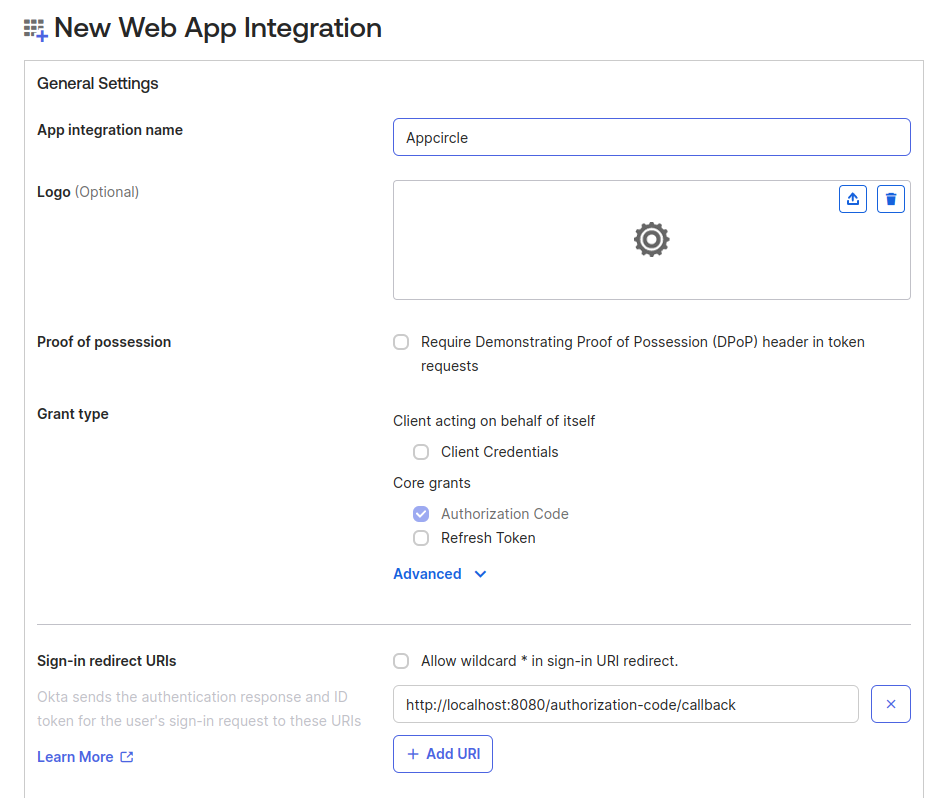
- Copy the
Store Redirect URLandDistribute Redirect URLfrom the Appcircle and add it to the Single sign-on URL section on the OKTA.
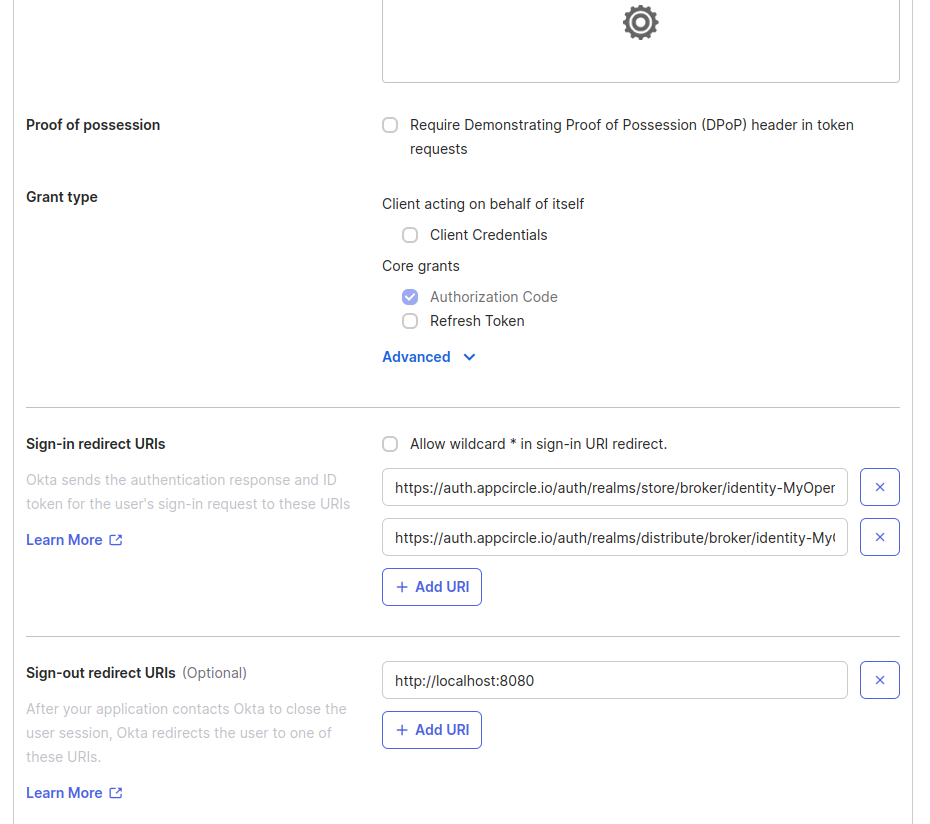
- Select Skip group assignment for now in the Assignments section. We will assign groups later manuall.
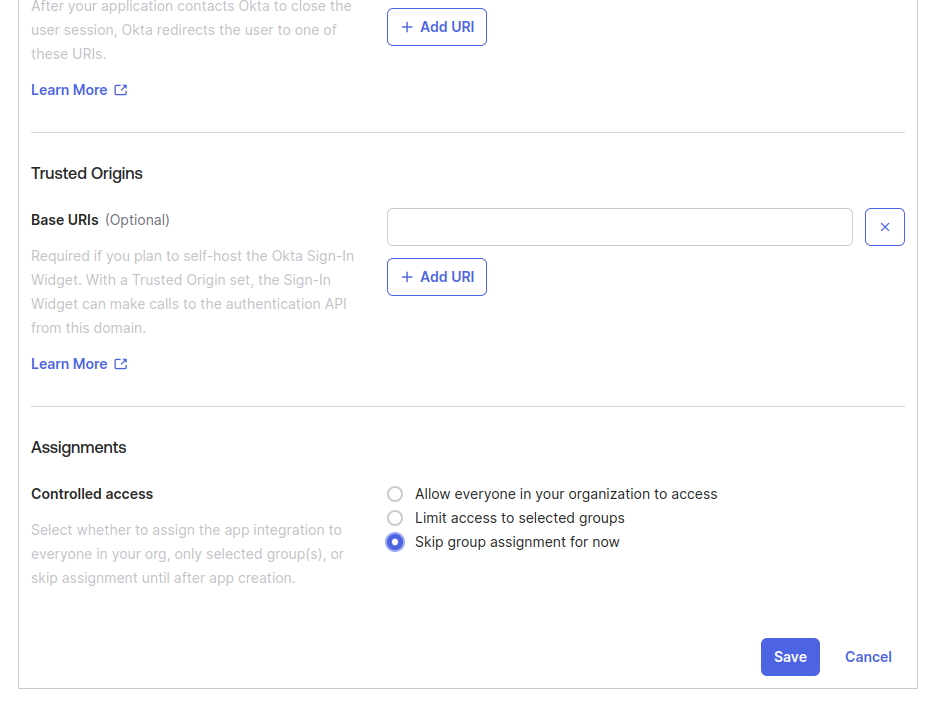
-
You can hit
Next. -
Navigate to the application's General Settings and locate the Client ID and Client Secret. These credentials will be required and should be noted for future configuration steps.
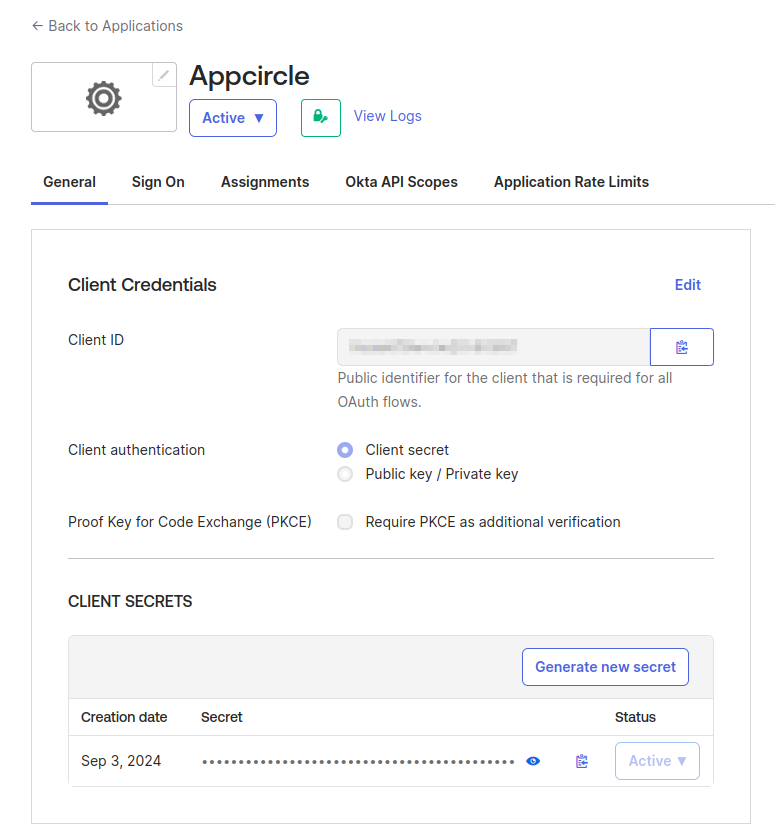
- Instead of writing all the settings of OpenID, you can download the settings file from Okta and upload it to Appcircle.
Download your OpenID configuration file from one of the below locations:
https://customer_name_here.okta.com/.well-known/openid-configuration
https://customer_name_here.okta.com/oauth2/default/.well-known/openid-configuration?client_id=<your_client_id>
- Go back to Appcircle, upload this JSON file by clicking the button under Import OpenID configuration.

- Select Client Authentication as
Client secret sent as basic authand enter your Client ID and Client Secret in OpenID Connect Config section. Also review the imported OpenID Connect Configuration in this section.
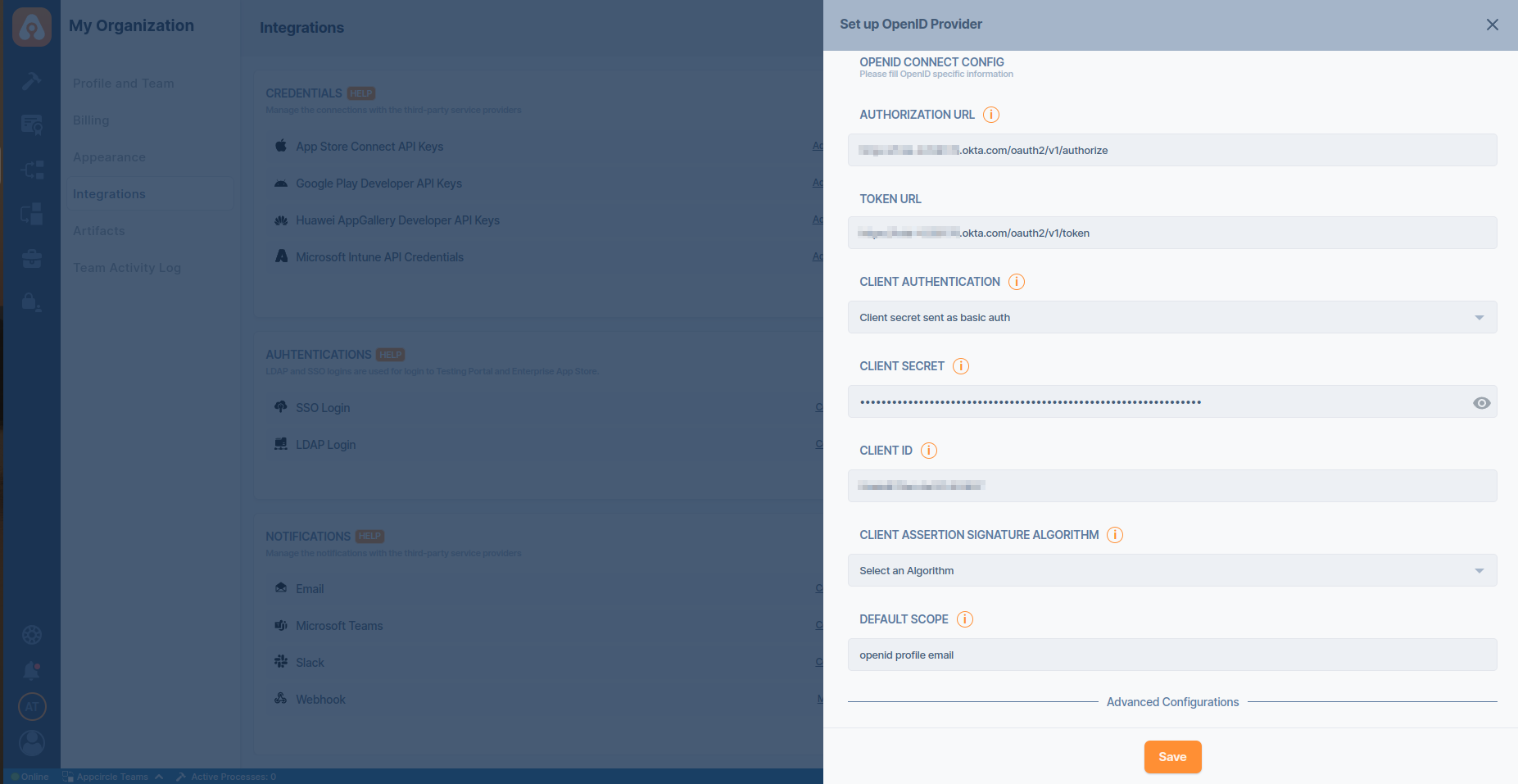
- Review the Advanced Configurations on this page.
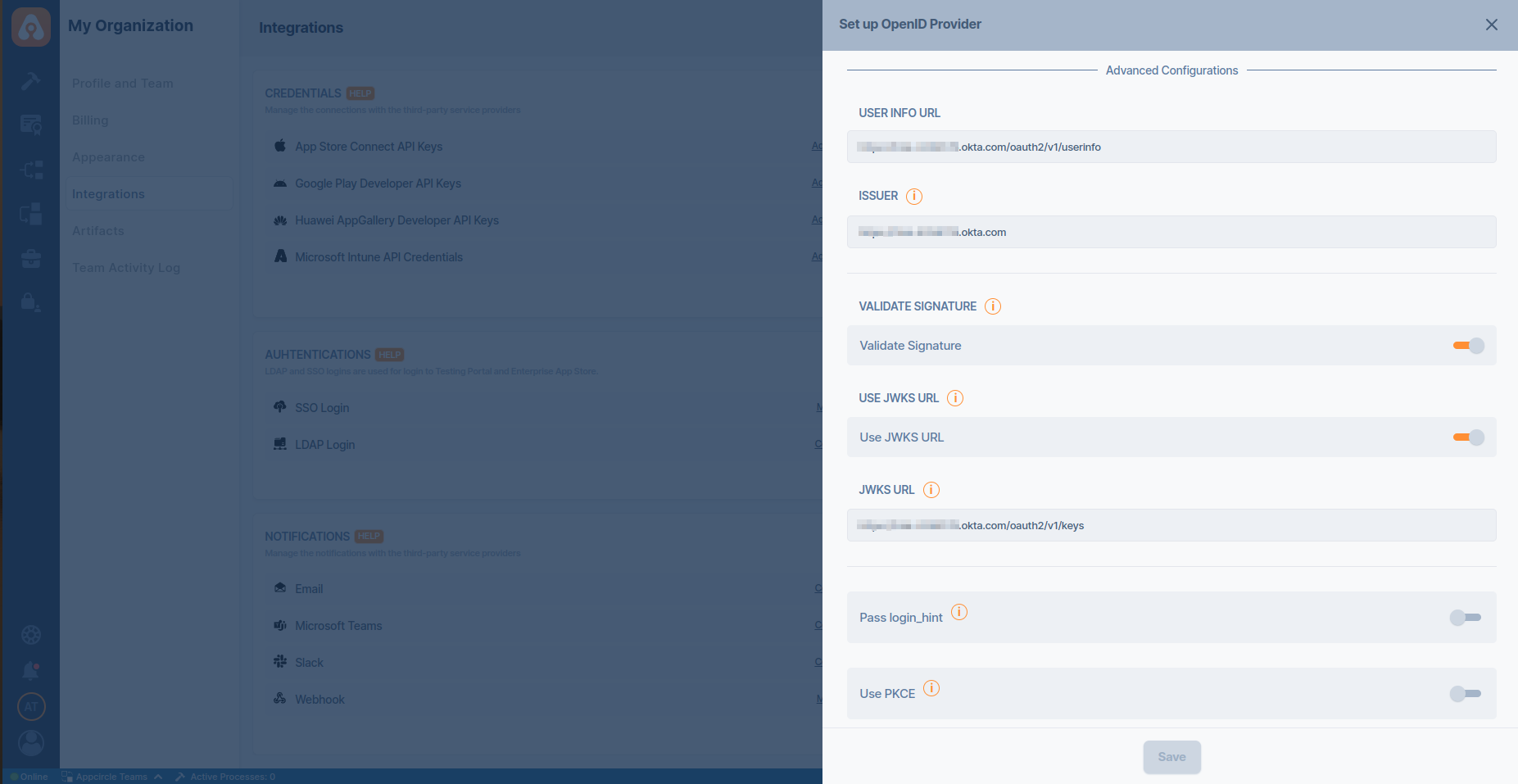
- Click on the Save button and finish the edit process.
Okta Managing User Groups
Managing user groups within Okta provides users and organizations with several benefits. By organizing users into groups, administrators can efficiently manage access permissions for various applications and resources, saving time and effort. Administrators can synchronize Okta user groups with Appcircle, allowing for granular access control and group-based permissions. This integration enhances security, simplifies access management, and promotes collaboration within organizations utilizing the Appcircle platform.
- Login to your Okta account and navigate to Directory and then click Groups.
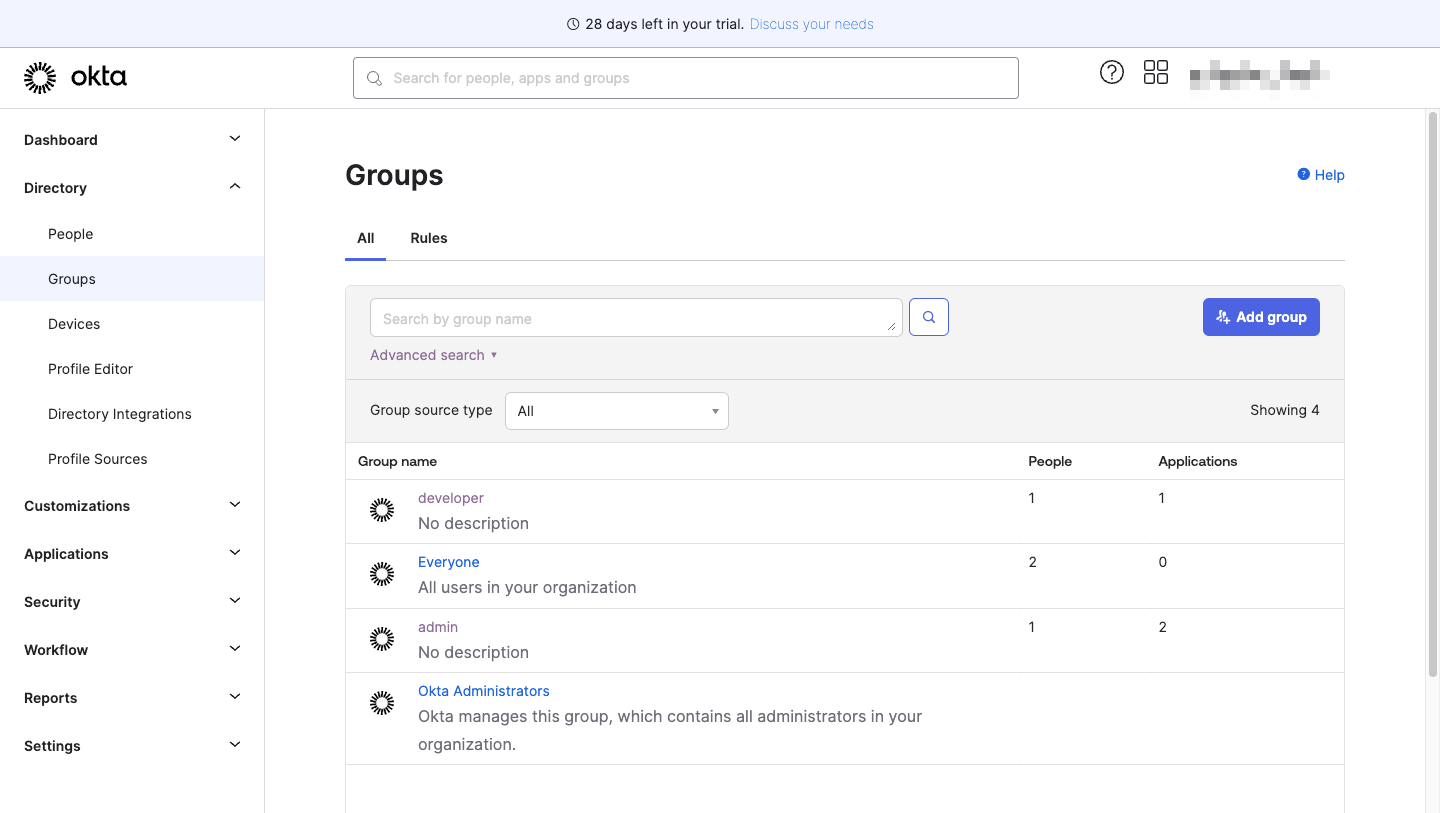
- Click "Add group" button and after fill the fields click "Save" button.
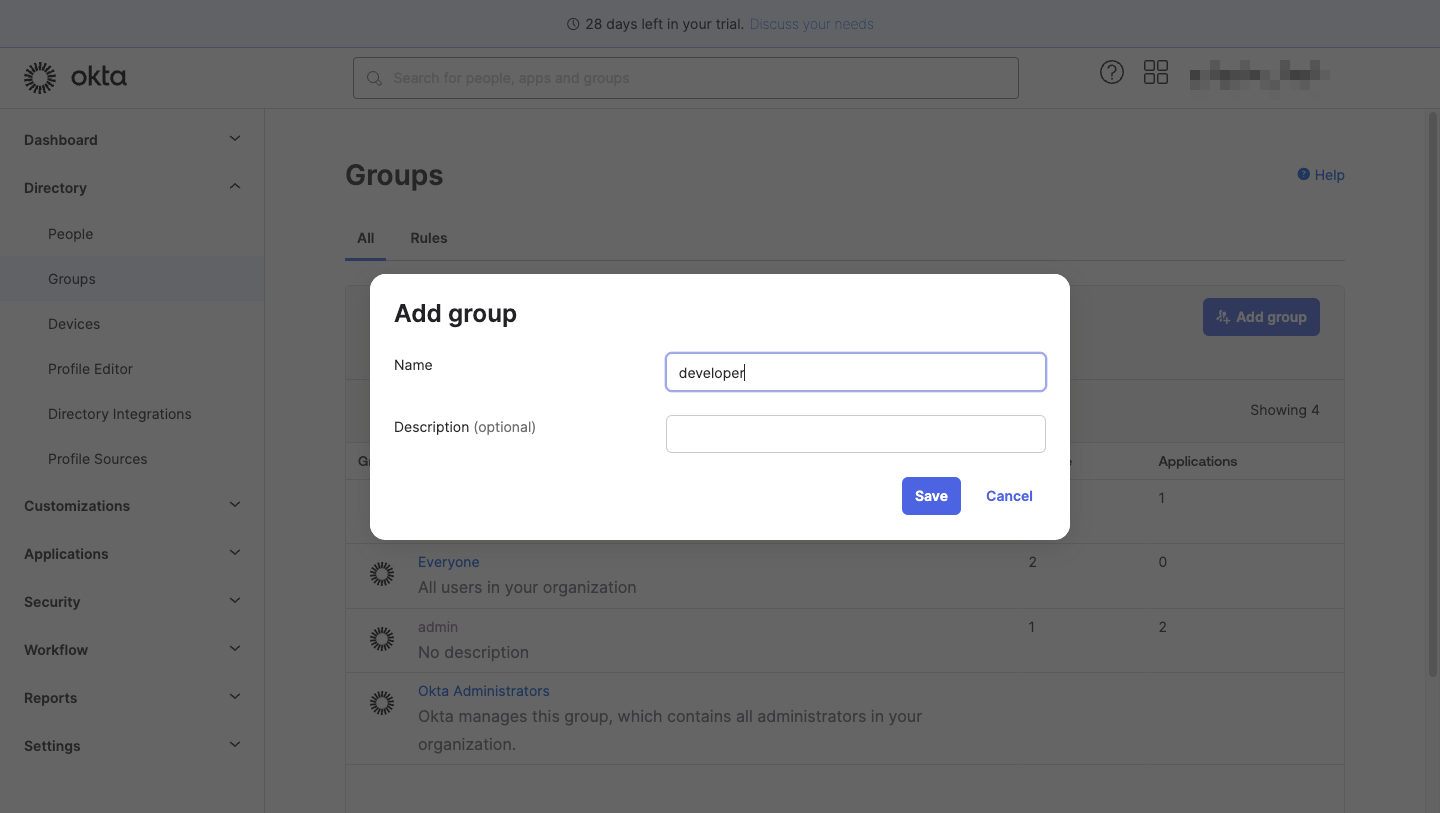
- Click recently created group name and assign people to your group.
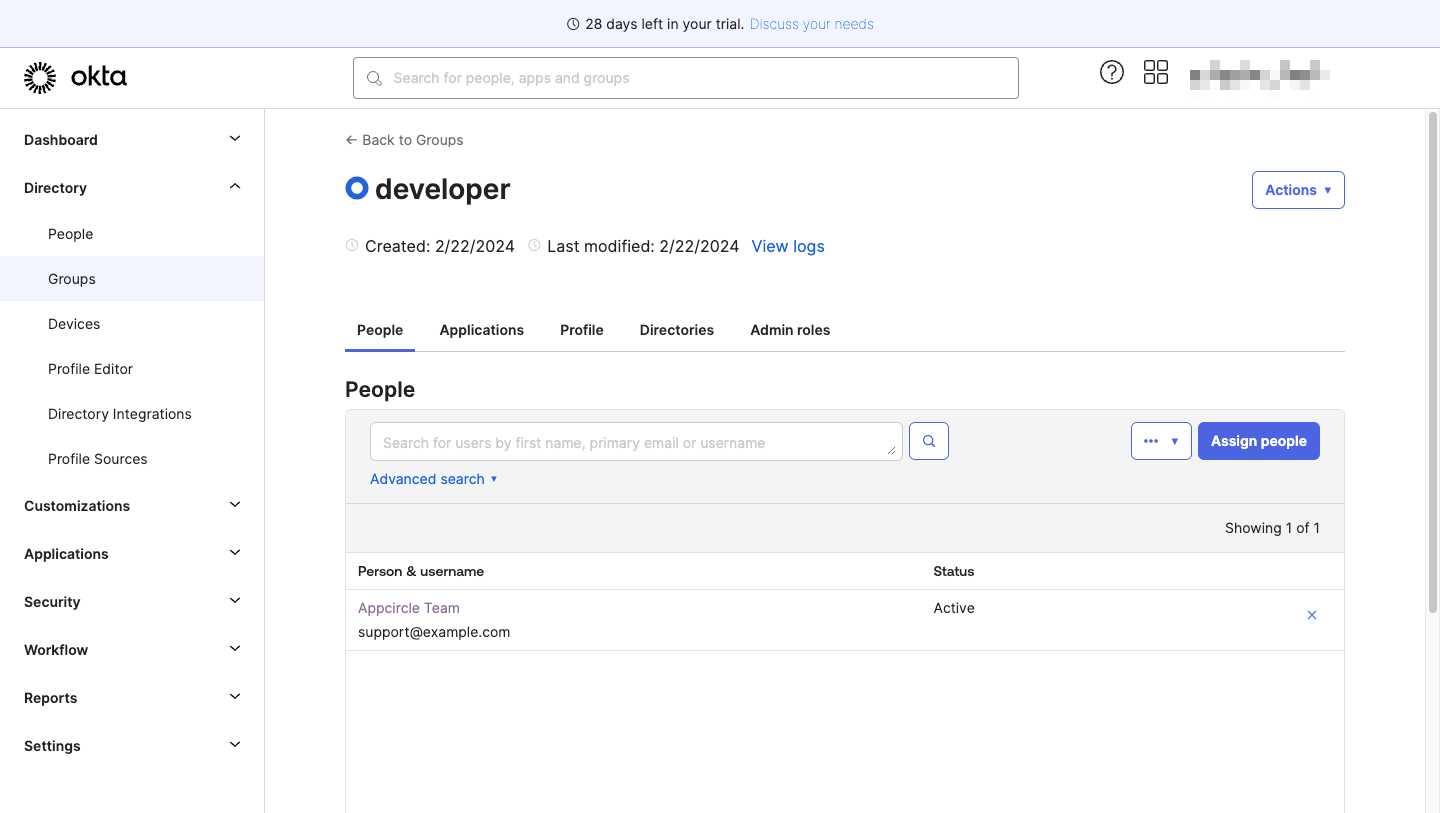
- Navigate to Applications tab and assign the recently created user group(s) with "Assign applications" button.
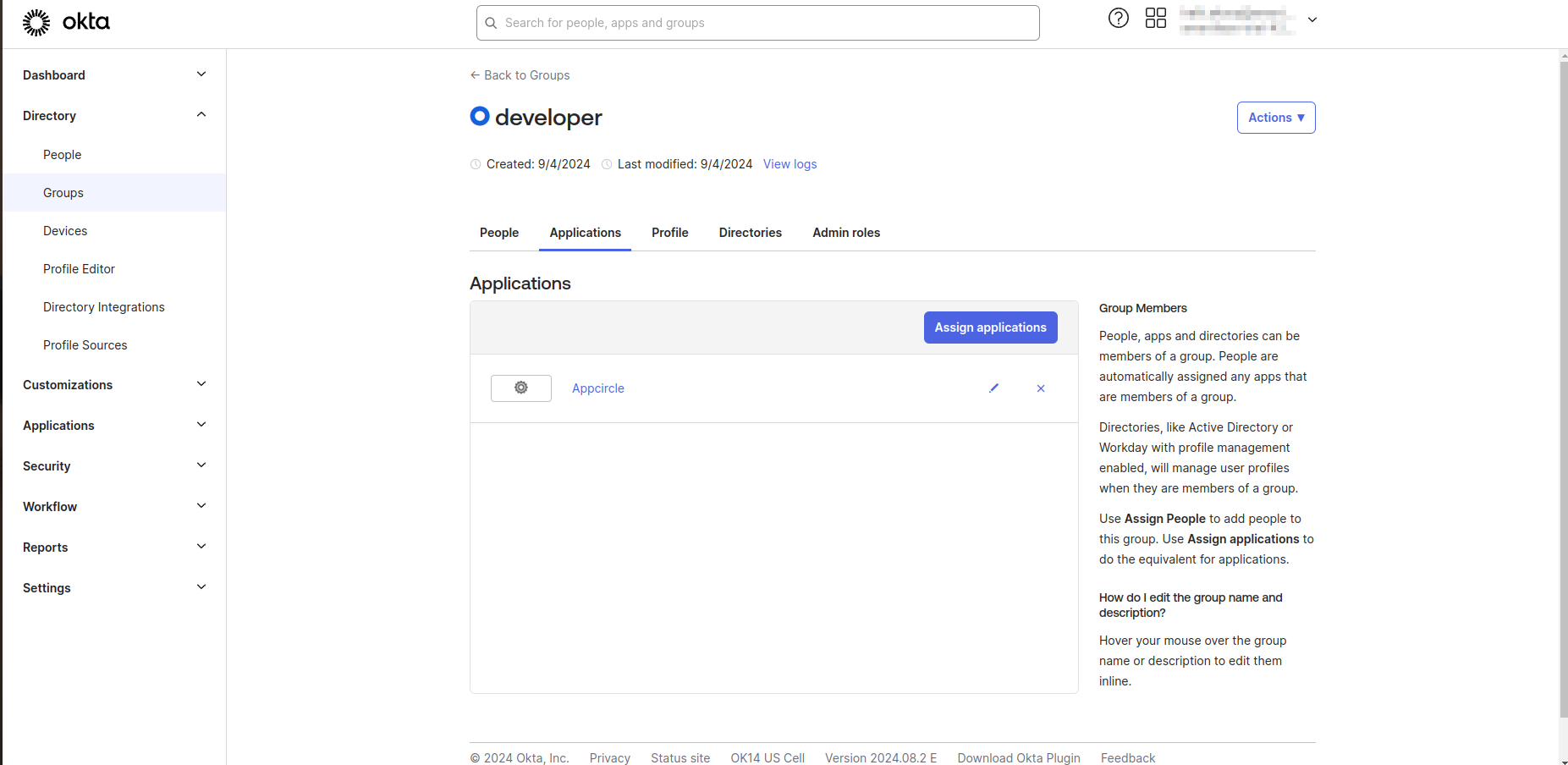
- Navigate to Applications and click on integrated app.
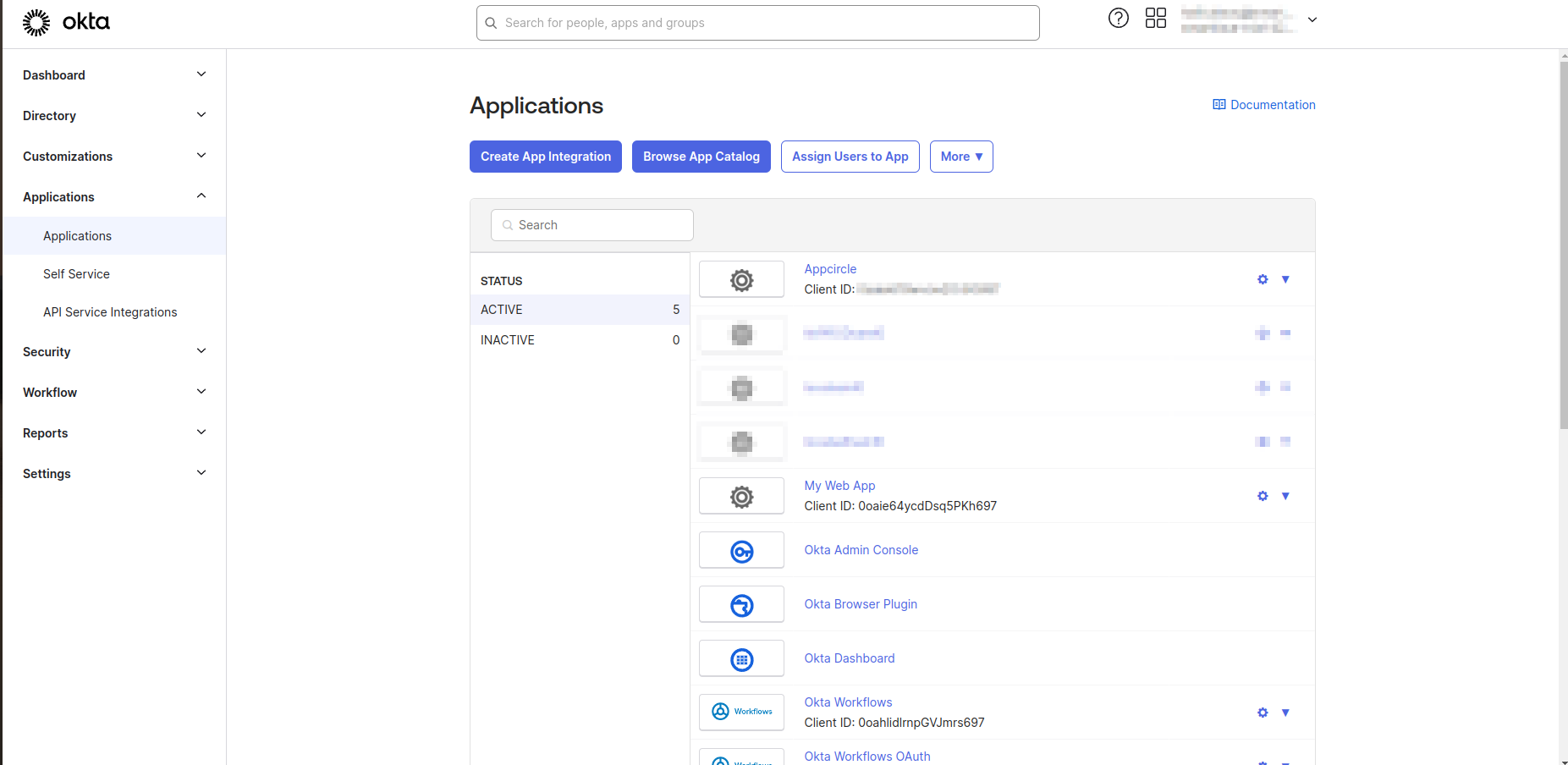
- Navigate "Sign On" tab and edit Groups claim filter in OpenID Connect ID Token section. If you want to get all the groups that you created you should set filter section as
Matches regexand.*.
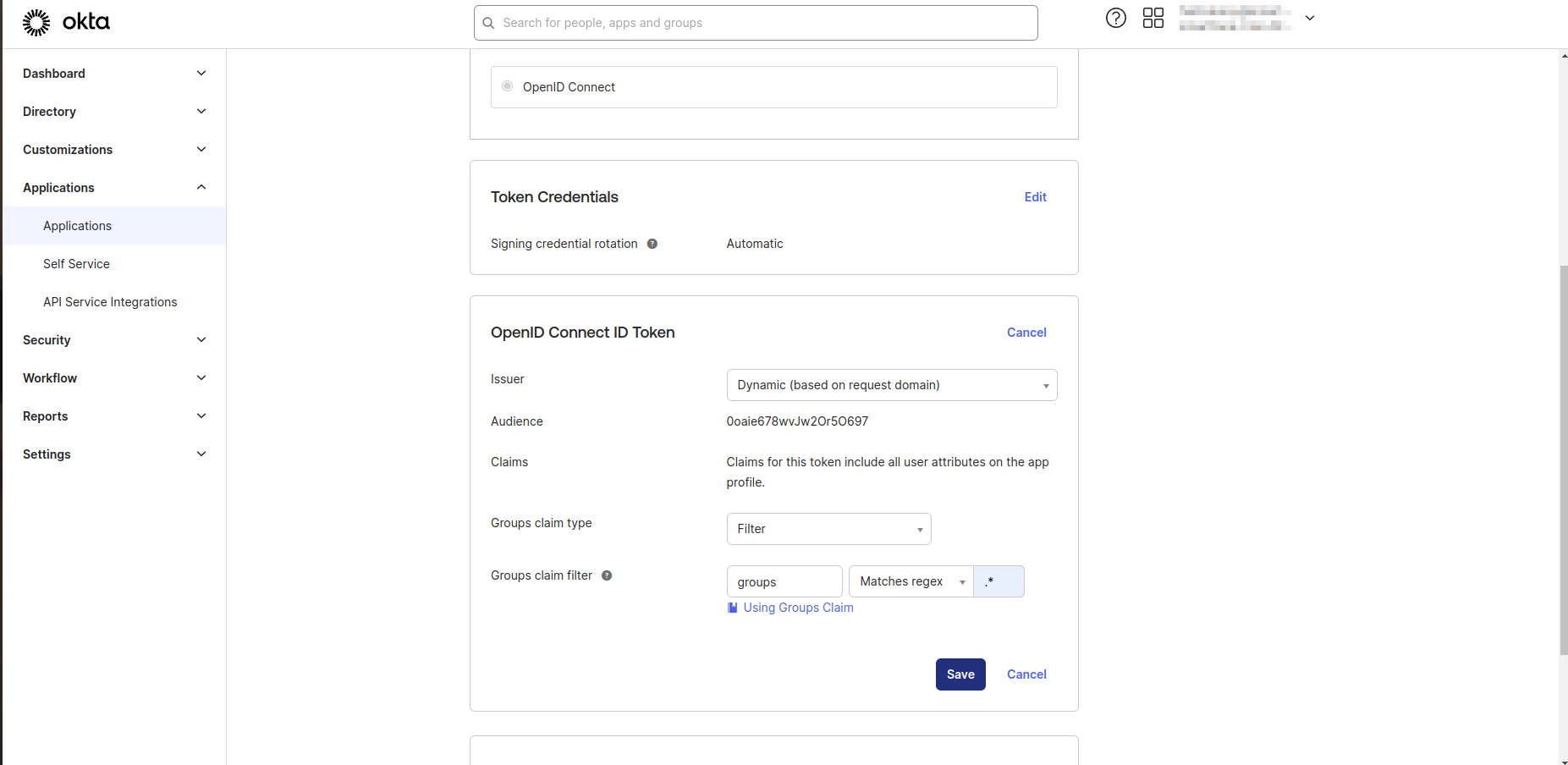
-
Click on the Save button and finish the edit process.
-
Click the Back to applications link. From the More button dropdown menu, click Refresh Application Data.
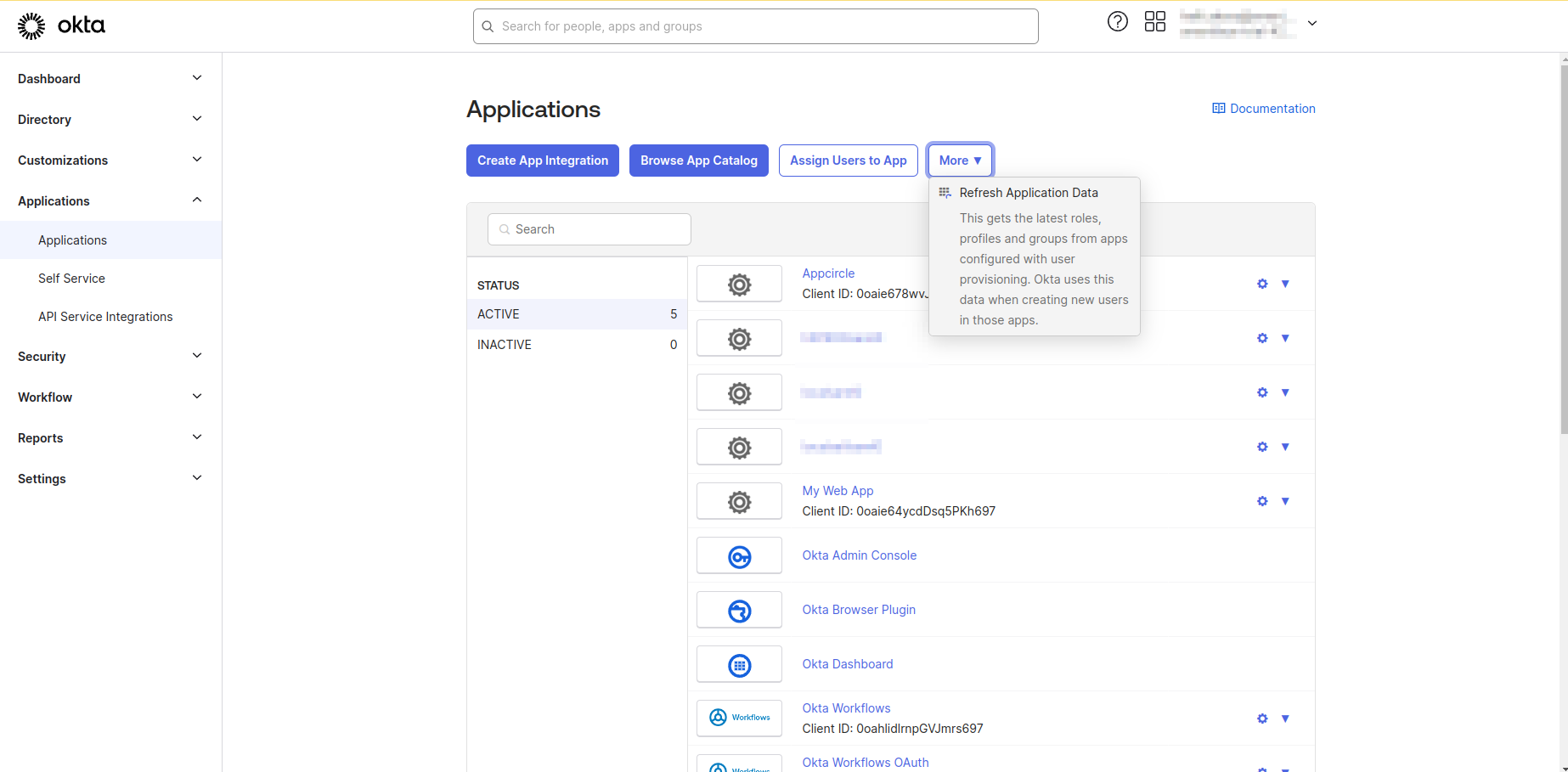
- Go back to Appcircle, go to My Organization > Integrations screen and press the Manage button next to SSO Login under the Authentications section.
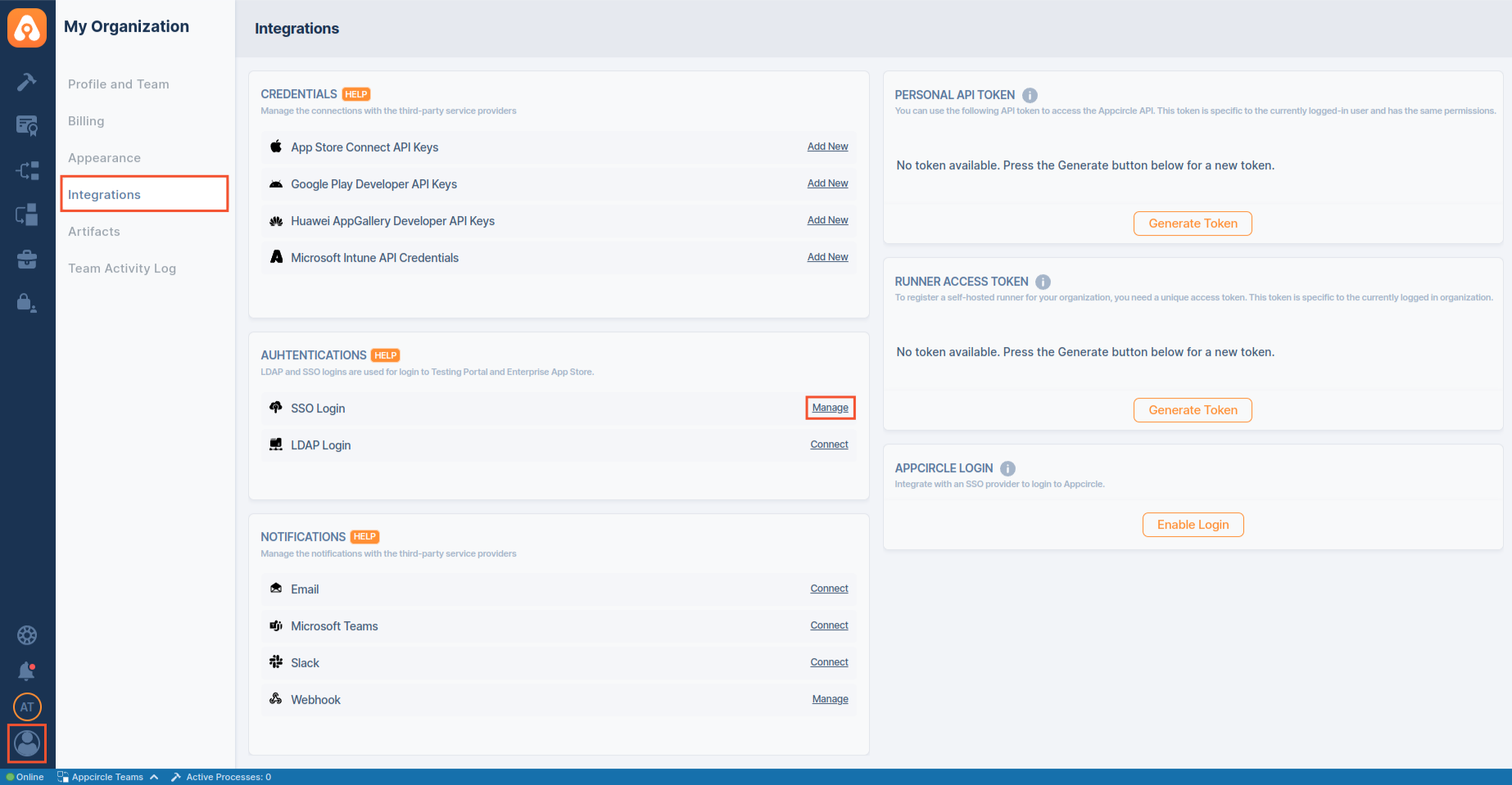
- Click Edit on your SSO integration.
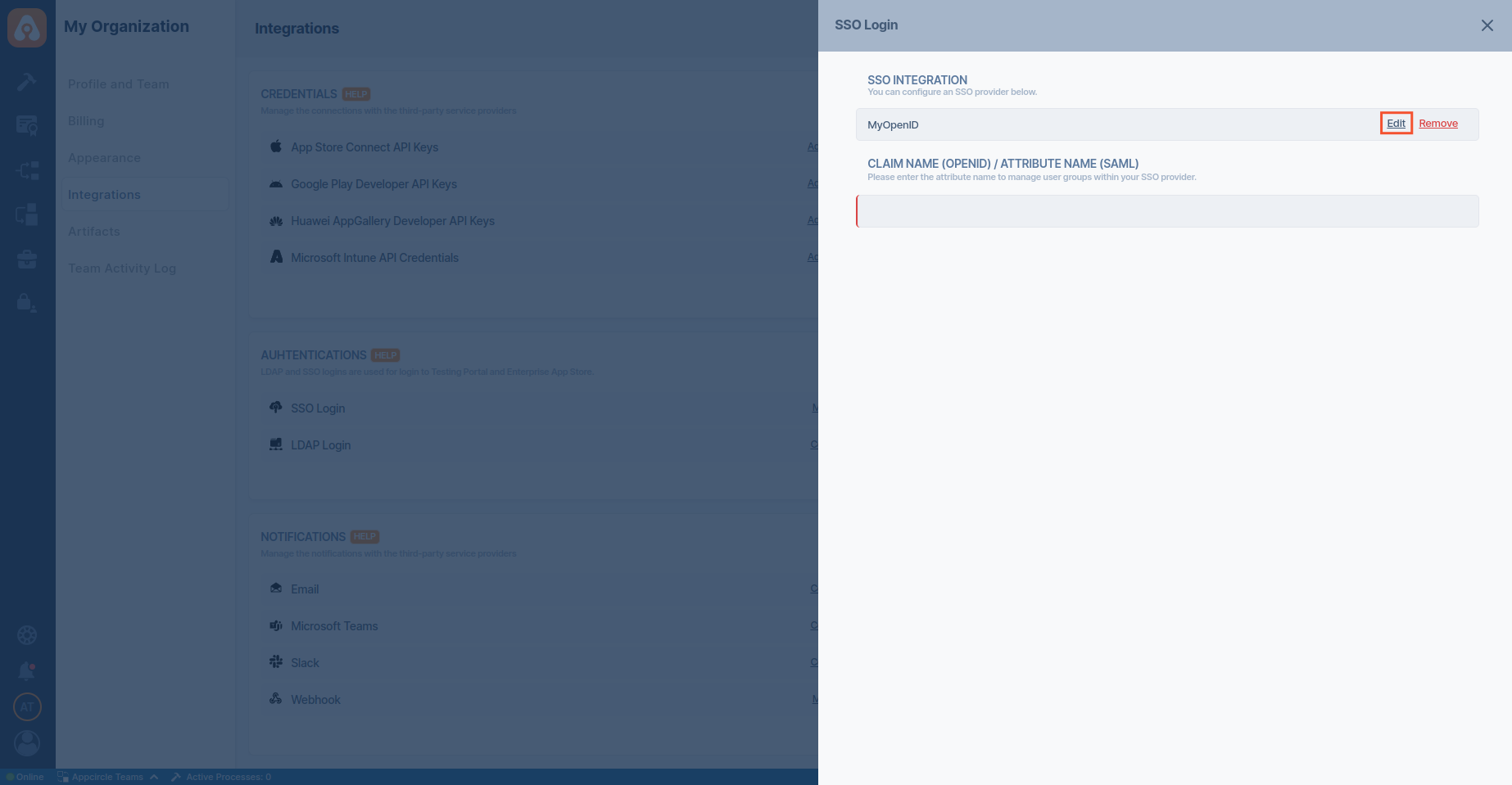
- Update the Default Scope attribute as
openid profile email groups.
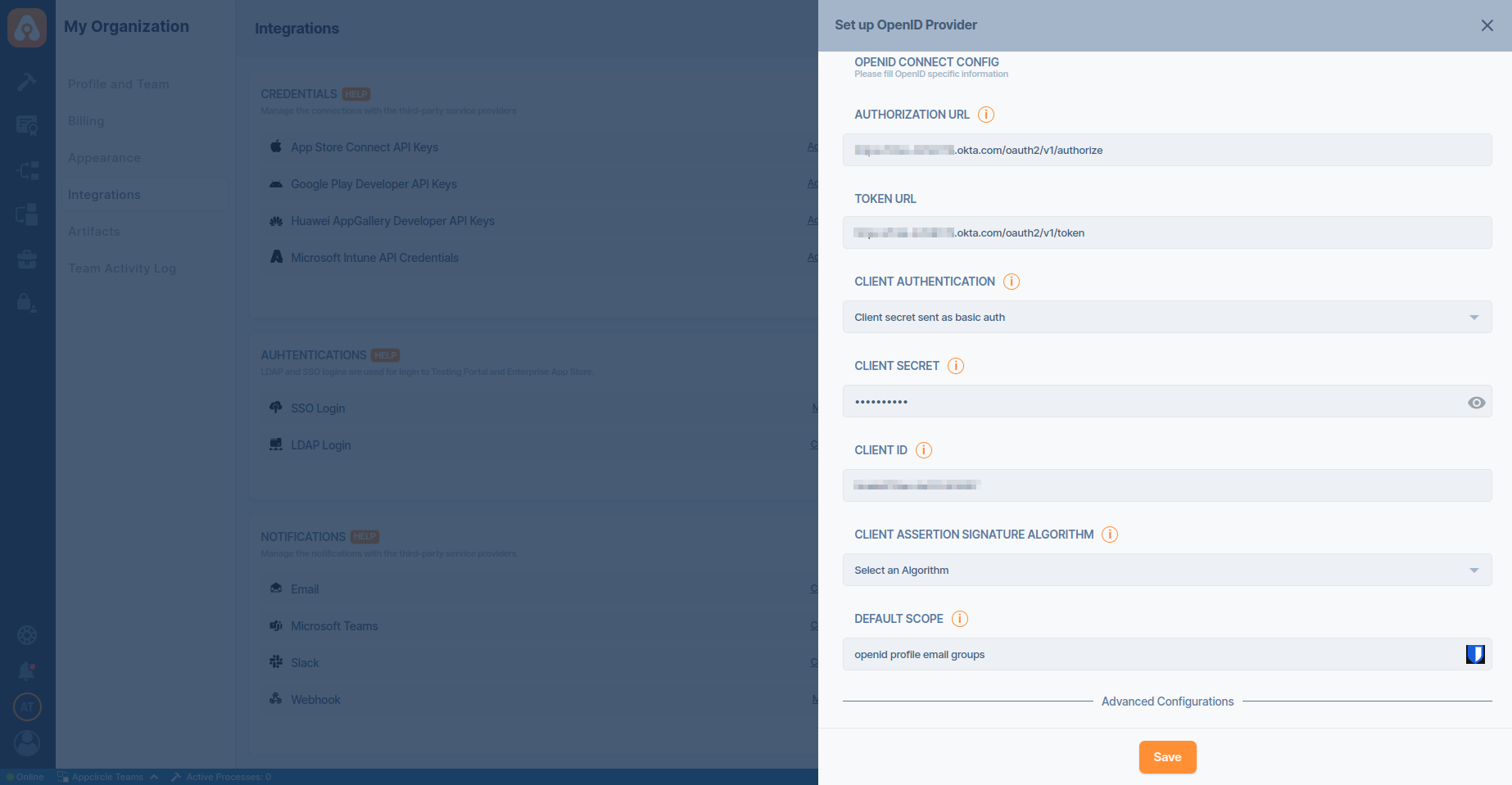
-
Click on the Save button and finish the edit process.
-
Update the Claim Name as
groups.

Sample Scenario
For example there are two groups, one is developers and other one is users.
The beta channel on Enterprise App Store should be available for developers group and not for users group that has end-users.
The live channel should be available for both groups in this case.
Appcircle Integration Configuration
- Go back to Appcircle, upload this XML file by clicking the button under Import SAML Configuration.

-
Check all the settings on this page and confirm that Redirect and SSO URLs are imported correctly. You can check if the X509 Certificate is imported correctly as well. If you want to enter multiple certificates you can separate them by using a comma between them. Please be aware that you need to remove any new lines or file headers from this edit box. This edit box only accepts a long base64 encoded string.
-
Hit
Savebutton and save the SAML configuration on Appcircle. -
To enable SSO Login for the Enterprise App Store, you should navigate to the Enterprise App Store -> Settings and then click on the
Activatebutton next to SSO Login.

- To enable SSO login for the Testing Distribution, go to the Testing Distribution module and select related profile.

- Click on the
Settingsbutton on the detail screen.

- Navigate to the
Authenticationtab and select SSO Login as the authentication type.
